Active Recombinant Human JAG1, Fc tagged
| Cat.No. : | JAG1-3138H |
| Product Overview : | Recombinant Human JAG1 (NP_000205.1) extracellular domain (Met 1-Ser 1046), fused with the Fc region of human IgG1 at the C-terminus, was produced in Human Cell. |
| Availability | December 25, 2025 |
| Unit | |
| Price | |
| Qty |
- Specification
- Gene Information
- Related Products
- Citation
- Download
| Species : | Human |
| Source : | HEK293 |
| Tag : | Fc |
| Protein Length : | Met 1-Ser 1046 |
| Form : | Lyophilized from sterile PBS, pH 7.4 |
| Bio-activity : | Measured by the ability of the immobilized protein to enhance BMP2-induced alkaline phosphatase activity in C3H10T1/2 mouse embryonic fibroblast cells. The ED50 for this effect is typically 5-30 μg/mL. |
| Molecular Mass : | The recombinant human JAG1/Fc is a disulfide-linked homodimer. The reduced monomer consists of 1254 amino acids and has a predicted molecular mass of 137 kDa. In SDS-PAGE under reducing conditions, the apparent molecular mass of human JAG1/Fc monomer is approximately 185.5 kDa due to glycosylation. |
| Endotoxin : | < 1.0 EU per μg protein as determined by the LAL method. |
| Purity : | > 85 % as determined by SDS-PAGE |
| Storage : | Samples are stable for up to twelve months from date of receipt at -20°C to -80°C Store it under sterile conditions at -20°C to -80°C. It is recommended that the protein be aliquoted for optimal storage. Avoid repeated freeze-thaw cycles. |
| Reconstitution : | It is recommended that sterile water be added to the vial to prepare a stock solution of 0.2 ug/ul. Centrifuge the vial at 4°C before opening to recover the entire contents. |
| Publications : |
A non-canonical JAGGED1 signal to JAK2 mediates osteoblast commitment in cranial neural crest cells (2019)
The Special Role of JAK/STAT, and Notch Signaling Pathways in Cancer Pathogenesis (2023)
Delivery of A Jagged1-PEG-MAL hydrogel with Pediatric Human Bone Cells Regenerates Critically-Sized Craniofacial Bone Defects (2023)
Controlled JAGGED1 delivery induces human embryonic palate mesenchymal cells to form osteoblasts (2017)
JAGGED1 stimulates cranial neural crest cell osteoblast commitment pathways and bone regeneration independent of canonical NOTCH signaling (2021)
Osteoinductive effect of soluble transforming growth factor beta receptor 3 on human osteoblast lineage (2021)
|
| Gene Name | JAG1 jagged 1 [ Homo sapiens ] |
| Official Symbol | JAG1 |
| Synonyms | JAG1; jagged 1; AGS, Alagille syndrome , JAGL1; protein jagged-1; AHD; AWS; CD339; HJ1; AGS; JAGL1; MGC104644; |
| Gene ID | 182 |
| mRNA Refseq | NM_000214 |
| Protein Refseq | NP_000205 |
| UniProt ID | P78504 |
| ◆ Recombinant Proteins | ||
| Jag1-1795R | Recombinant Rat Jagged 1 | +Inquiry |
| JAG1-2374H | Recombinant Human JAG1 Protein (Gly33-Asp250), His tagged | +Inquiry |
| Jag1-3625M | Recombinant Mouse Jag1 Protein, Myc/DDK-tagged | +Inquiry |
| JAG1-27630TH | Recombinant Human JAG1, Fc-tagged | +Inquiry |
| JAG1-379H | Active Recombinant Human JAG1 protein, Fc-tagged | +Inquiry |
| ◆ Cell & Tissue Lysates | ||
| JAG1-2382HCL | Recombinant Human JAG1 cell lysate | +Inquiry |
JAGGED1 Stimulates Cranial Neural Crest Cell Osteoblast Commitment Pathways and Bone Regeneration Independent of Canonical NOTCH Signaling
Journal: Bone PubMed ID: 32980561 Data: 2022/4/24
Authors: Archana Kamalakar, Jay M. McKinney, Steven L. Goudy
Article Snippet:50 μL (1.5 mg) of Dynabeads Protein G ( 36 ) (Invitrogen 10003D) were transferred to a tube, where the beads were separated from the solution using a magnet.50 μL (1.5 mg) of Dynabeads Protein G ( 36 ) (Invitrogen 10003D) were transferred to a tube, where the beads were separated from the solution using a magnet.. Recombinant JAG1-Fc (5 μM, 5.7 μM, 10 μM or 20 μM) (Creative BioMart, JAG1–3138H) and IgG-Fc fragment (5 μM or 5.7 μM) (Abcam, ab90285) alone were diluted in 200 μL PBS with 0.1% Tween-20 (Fisher, BP337–500) and then added to the dynabeads.. The beads plus proteins were incubated at 4°C with rotation for 16 hours.The beads plus proteins were incubated at 4°C with rotation for 16 hours.
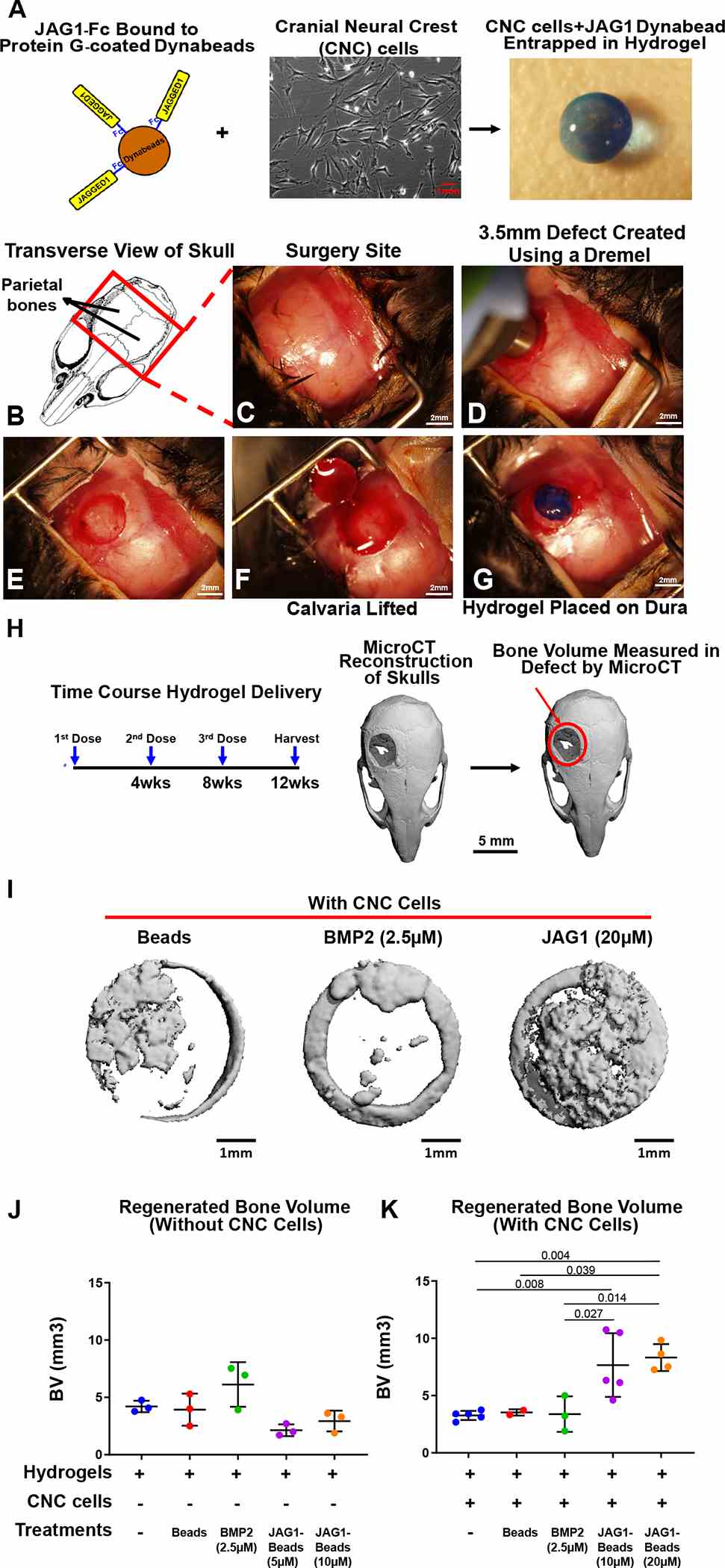
As a proof of concept experiment, we (A) incorporated
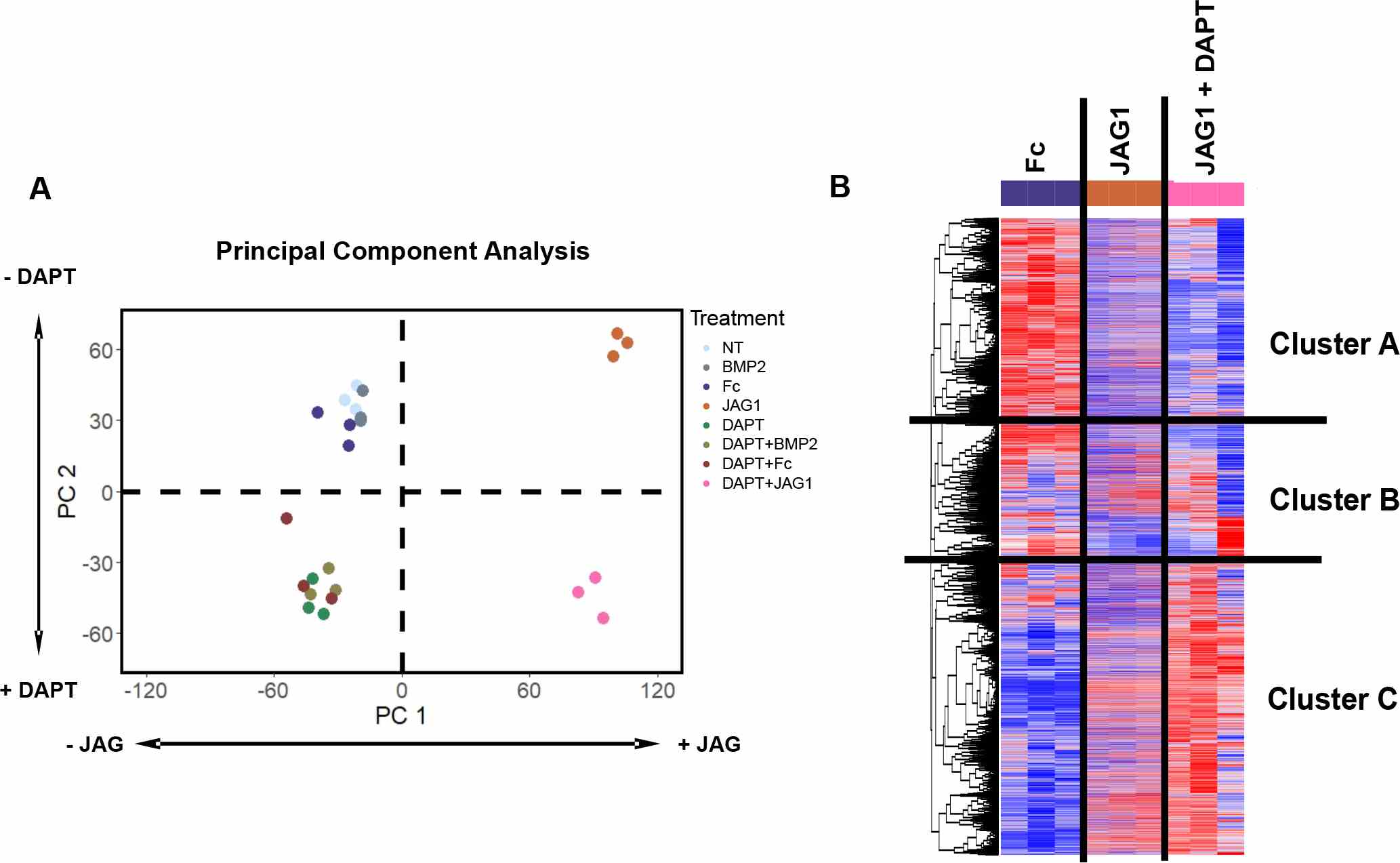
(A) A principal component analysis of all treatments revealed that PC1 distinguished
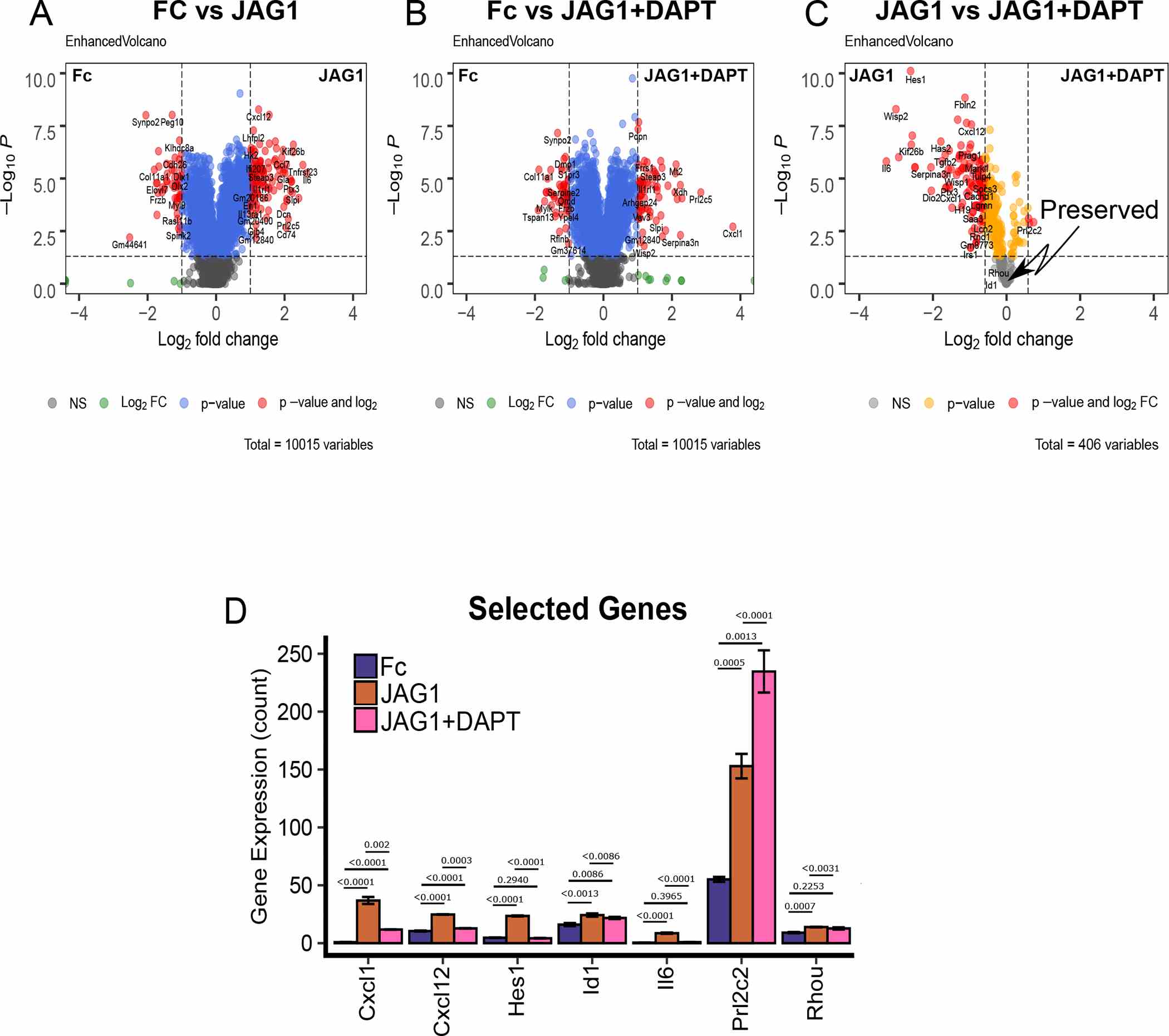
(A-B) Volcano plots of differentially expressed genes in CNC cells that were treated with
Controlled JAGGED1 delivery induces human embryonic palate mesenchymal cells to form osteoblasts
Journal: Journal of biomedical materials research. Part A PubMed ID: 28913955 Data: 2019/2/1
Authors: Jean De La Croix Ndong, Yvonne Stephenson, Steven Goudy
Article Snippet:Culture well chambered coverglass were pre-coated with rabbit anti-human IgG (10 μg/mL) in phosphate saline buffer (PBS) for 30 min at 37°C and subsequently blocked with cell culture growth medium for 30 min. Chambered coverglass were then coated with 5 μg/mL JAGGED1/Fc (JAG1–3138 H, Creative BioMart) diluted in growth media for 2 hours at 37°C.. As control for JAGGED1, human IgG (5 μg/mL) was used.As control for JAGGED1, human IgG (5 μg/mL) was used.
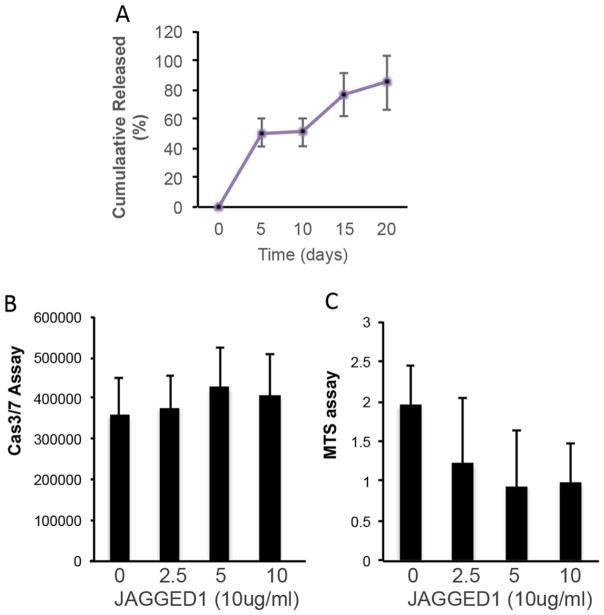
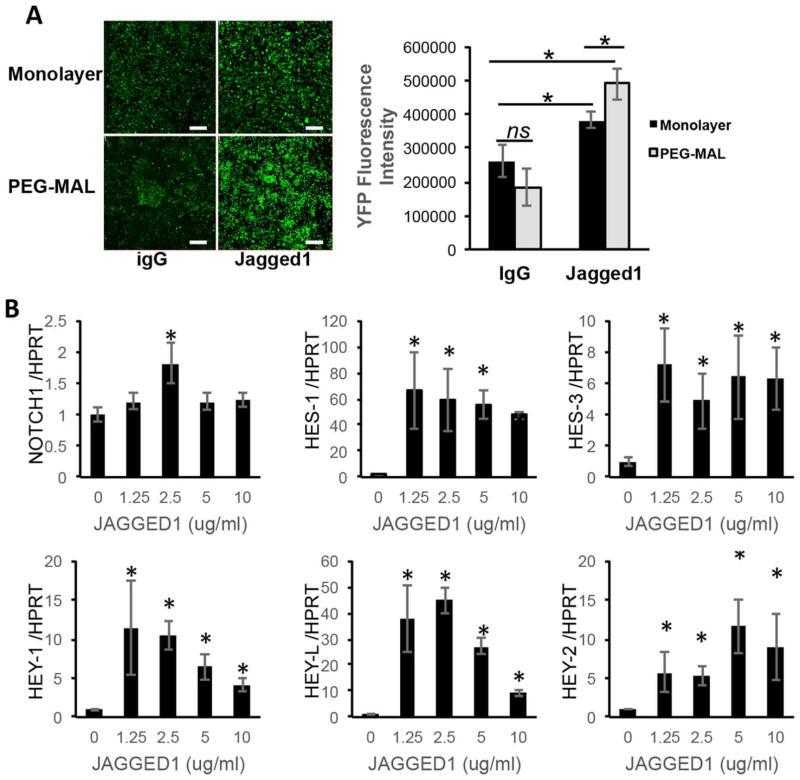
Activation of Notch Signaling Pathway by Jagged-1PEG-MAL. HEPM cells or Notch reporter CHO cells were encapsulated in functionalized
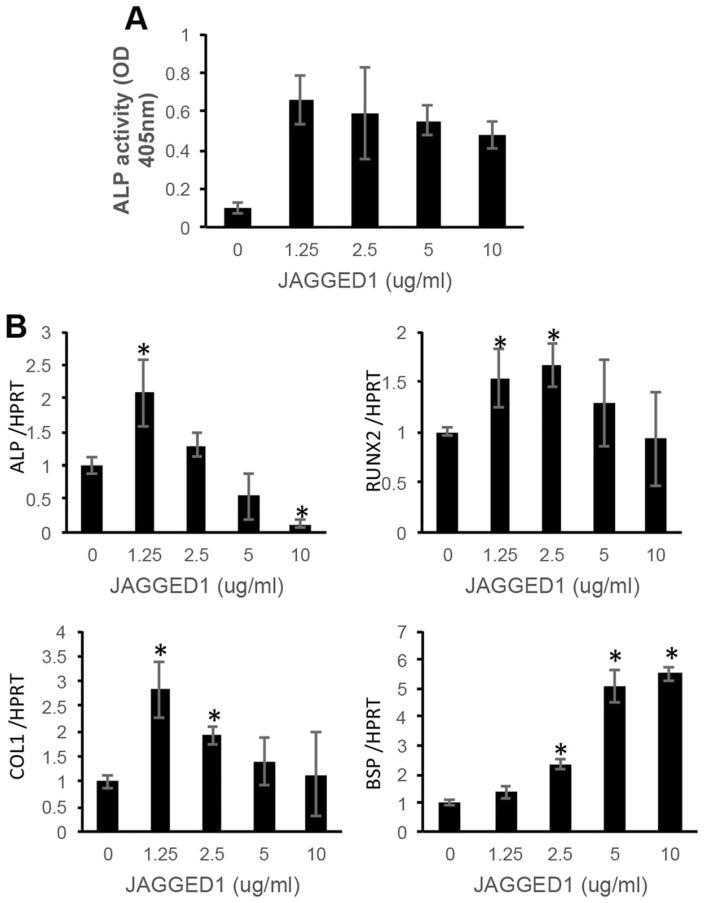
Not For Human Consumption!
Inquiry
- Reviews (1)
- Q&As (0)
Customer Reviews
Write a reviewThanks for reaching out, I hope you’ve been well. Yes, your product worked as great as it always has for us, thank you for asking
Ask a Question for All JAG1 Products
Required fields are marked with *
My Review for All JAG1 Products
Required fields are marked with *


